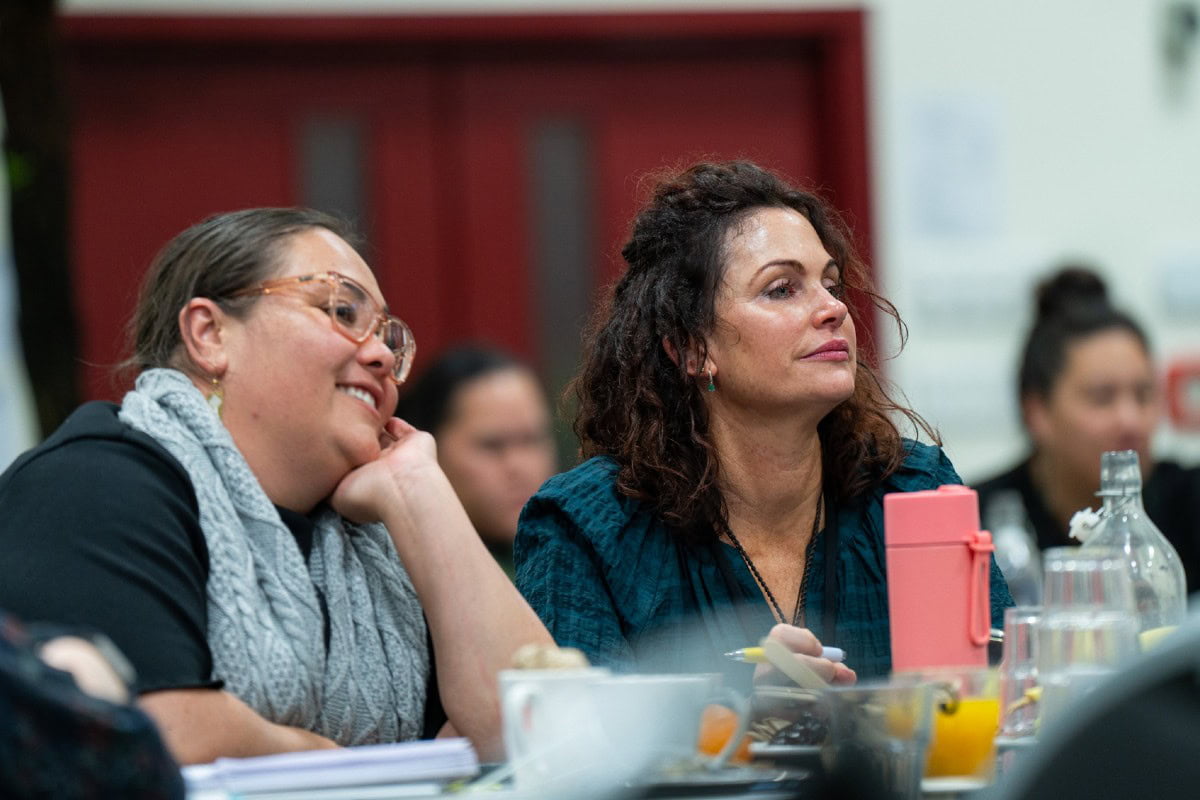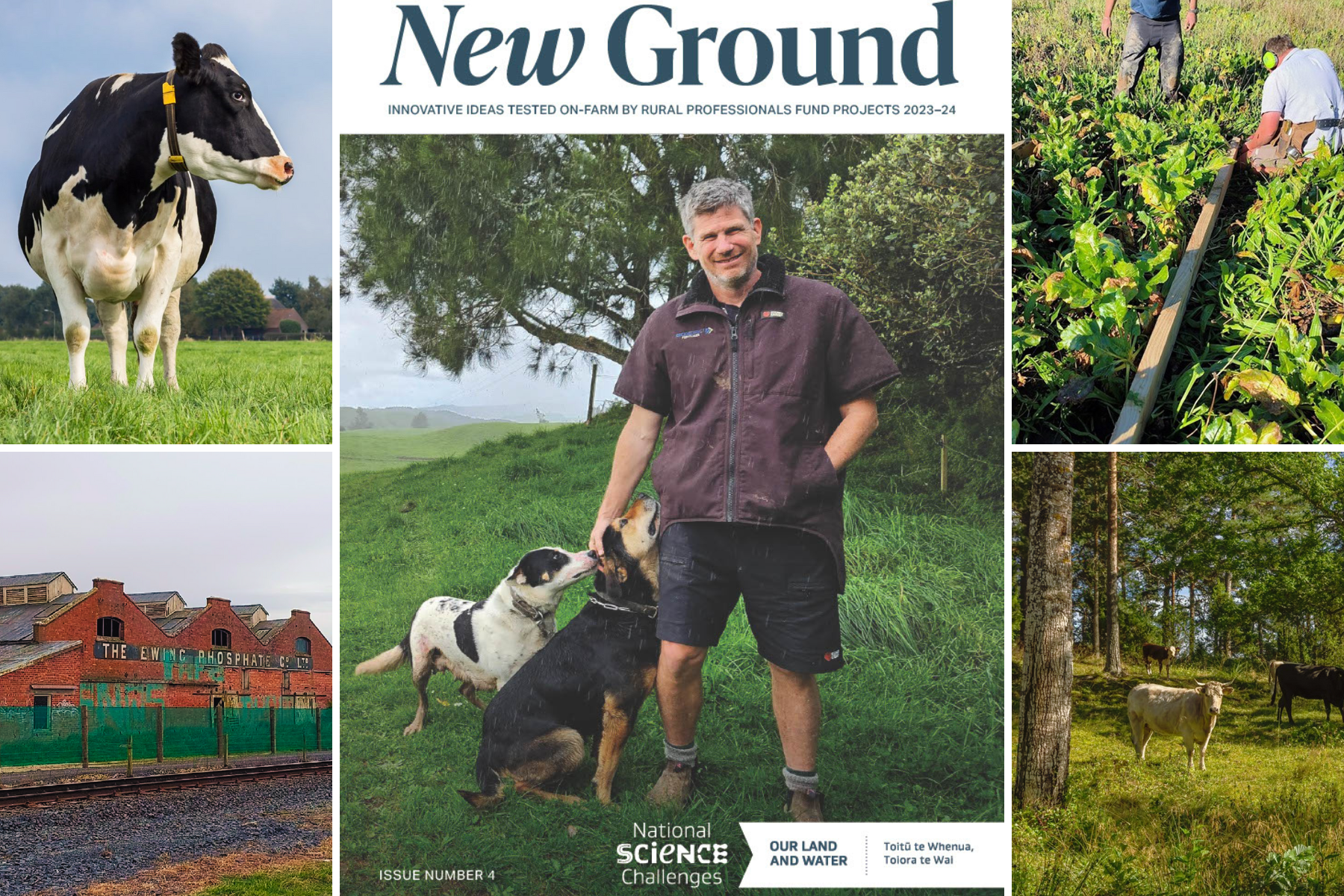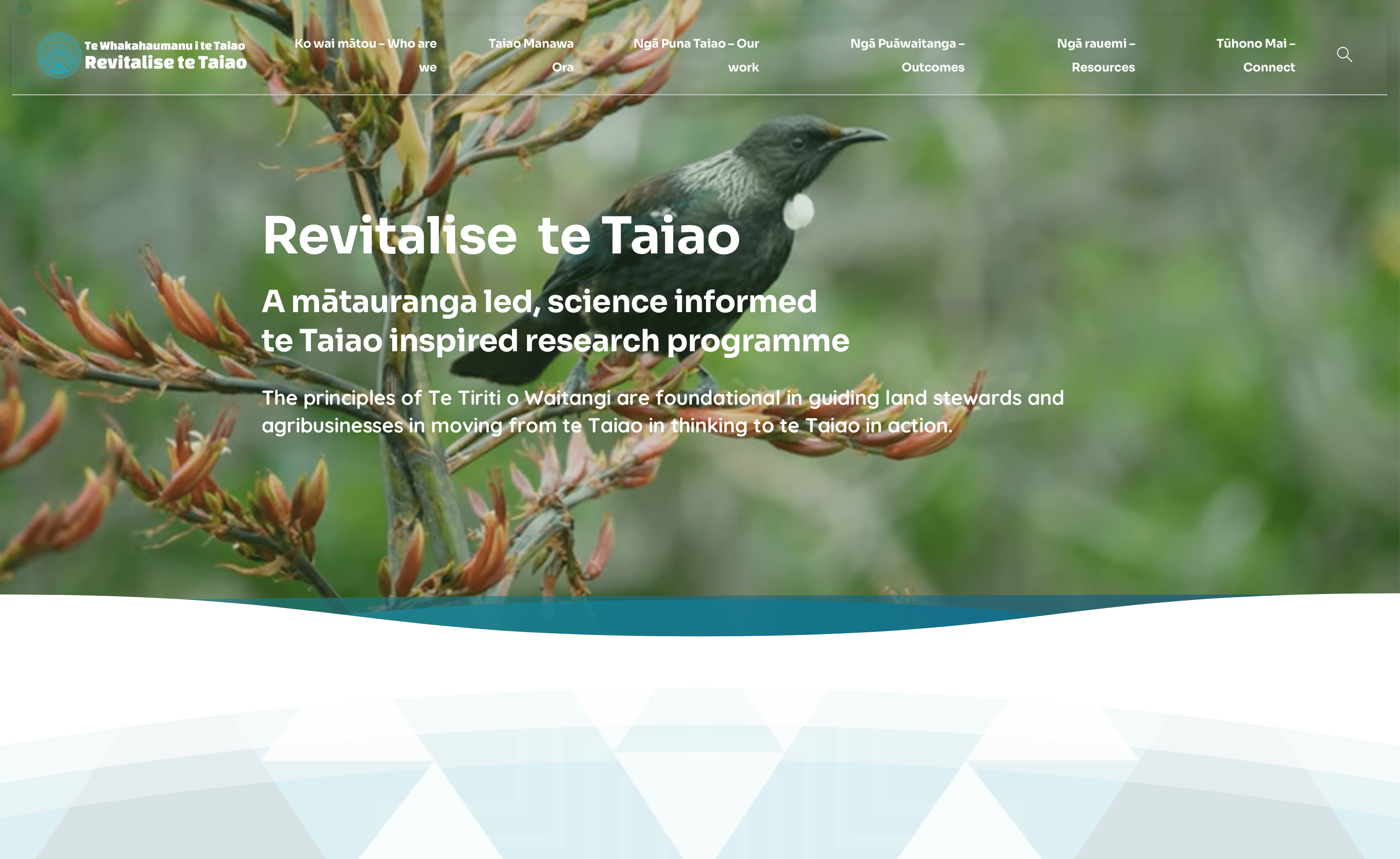Five Principles of Co-innovation
Helen Percy leads AgResearch’s Adoption and Practice Change implementation programme to grow impact from research. Here she offers her insight into what co-innovation is, and how it can be applied in practice in a research project.
What is co-innovation and how can it be applied in practice in a research project?
Co-innovation is the process of jointly developing new or different solutions to a complex problem through multi-participant research processes – and keeping these processes alive throughout the research.
Our experience has been applying co-innovation as a research approach to address complex problems in an agricultural context, however, the principles apply well beyond agriculture.
Co-innovation is most suited to hard-to-solve technical, social, cultural and economic challenges. Such challenges have no obvious cause and effect relationships, as well as many different players with a stake in the research problem and solution. These include policy makers, industry, community members, first nations representatives and others who are involved in the research as partners and stakeholders.
Co-innovation as a research approach
One way to think about co-innovation is as a research approach which emphasises working with others at each stage of the research process (see figure below).
The first stage (co-design) includes the design of the research issues and outcomes with partners and stakeholders.
Once the issues and outcomes of the research are designed, the next stage (co-develop) is to develop the details of the research process. This should include the shared development of an evaluation framework, and ways for the research team to learn and adapt the research as it proceeds.
Processes to share the results and implement the findings are required during, and at the end of, the research.
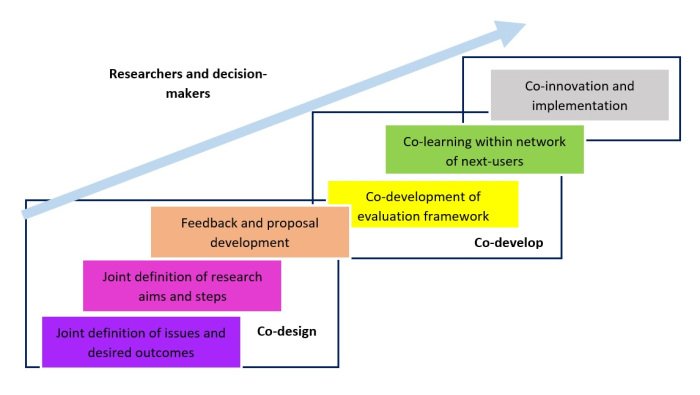
Our work has indicated that there are five key principles to co-innovation that can be applied in research projects, as illustrated in the figure below. Here we outline what they are and provide links to some of the tools and processes that we use to support these in practice. Note these principles are in no order of priority.
1. Involve Partners and Stakeholders
This is about identifying and involving those who will benefit from the research in order to understand the problem from the beginning and develop solutions together throughout the research process.
Questions to ask:
- Does your project include people who can help to understand the nature of the problem (or opportunity) and its causes?
- Does the project include opportunities to work with people who could influence the implementation of the research, including those who could take the ideas to the market (entrepreneurs) or create the rules supporting implementation (policy makers)?
- Do the partners and stakeholders understand their role in the research project?
2. Take a Problem Focus
In research we often want to jump straight into the ‘doing’ without clearly identifying the problem that is being addressed. A co-innovation approach means putting the problem at the centre (rather than the technology or end-user). For example, in our agricultural context, it is not about the farmer (as the end user) who needs to change, but about everyone (researchers, farmers, policy makers, industry etc) addressing the shared problem together rather than focussing on their own ideas.
Questions to ask:
- Does the project include activities to first identify the problem or opportunity?
- Are you able to repeat these activities at key points in your research process to maintain a problem focus?
- Have you taken a broad view of the system by describing the technical, social, cultural, economic, market and political aspects of the problem and solution?
- Are there opportunities to change activities to reflect changes in understanding of the problem (eg., stop/go milestones or explicit re-planning steps)?
3. Assemble and nurture the right team
In addition to the technical skills, there need to be people with collaborative skills who can strengthen the team’s ability to co-innovate. These are people who can take a broader view of the system and act as translators or brokers between the researchers, and partners and stakeholders. Collaborative and open leadership is also important.
Questions to ask:
- Do you have people in the team (or access to people) with skills such as system thinkers, facilitators, translators and brokers?
- Have you allowed enough time up front to fully understand the language and approaches of the different disciplines and perspectives in your research team?
4. Front up – share results early and often
This means that data and results are shared as they emerge, rather than waiting until the end of the research. This helps to understand how the results fit with user knowledge, identify new questions, check that the results are meaningful and/or relevant to users, and keeps the partners and stakeholders engaged in the research process.
Questions to ask:
- Do you have regular activities with stakeholders to hear, reflect on, learn from, and provide feedback on the research? (For example, project workshops or field days?)
- Does the project include opportunities and resources for non-research partners to contribute data, knowledge and skills?
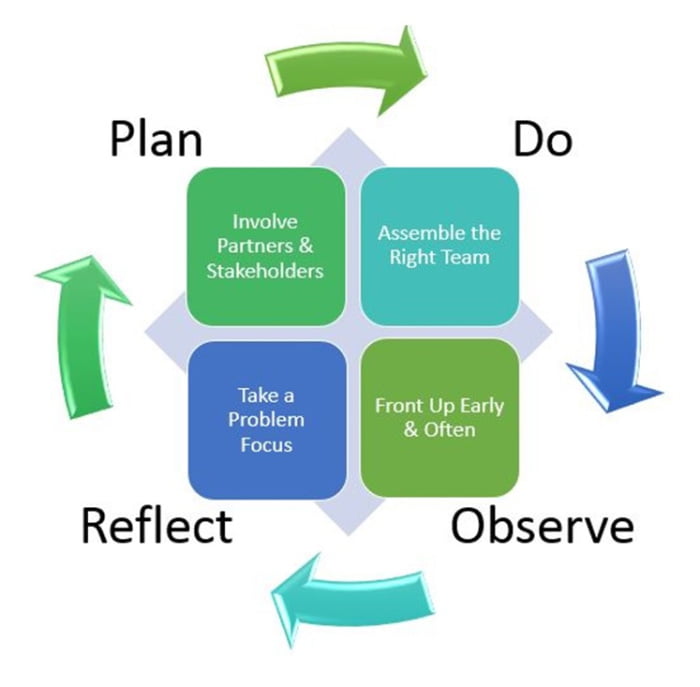
5. Plan-Do-Observe-Reflect: action learning cycle
This principle is about building in a rapid action learning cycle of Plan-Do-Observe (monitor)-Reflect to enable projects to maintain a focus on action, as well as adapting to changing circumstances and quickly seizing new opportunities for success. One good way to do this is to build in monitoring and evaluation activities from the beginning, using participatory processes with a focus on reflection and learning.
Questions to ask:
- Have you built in monitoring and evaluation from the beginning of the project and sufficient time and resources to support this?
- Does the project include resources and time for reflecting on progress with partners and stakeholders?
What’s your experience with co-innovation?
What has been your experience of co-innovation? Do you have any additional or different principles to add? Leave us a comment below.
___
This blog post originally appeared in the Integration and Implementation Insights blog. More information:
- Building co-innovation into your research proposal (PDF)
- Impact planning tool (stakeholder analysis) can help identify partners and stakeholders, as well as taking a problem focus
- Participatory programme logic can help with taking a problem focus and the action learning cycle
- The activity plan can help with sharing results (PDF 409KB)
- Evaluation methods can help with the action learning cycle
Author
 View Our Strategy Document 2019 – 2024
View Our Strategy Document 2019 – 2024

